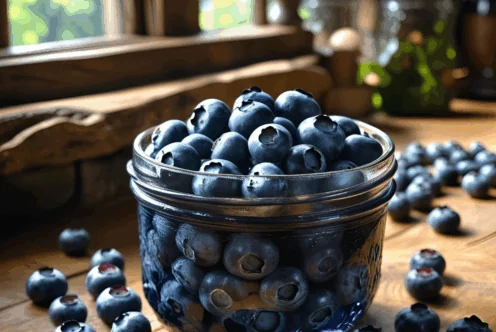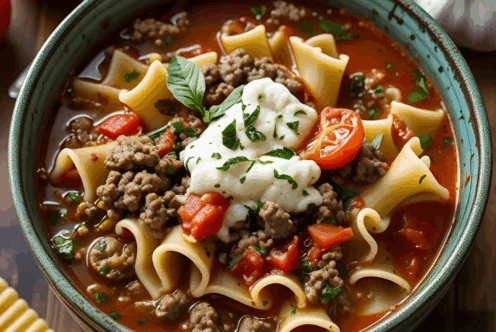Blog
Substitute Ingredients for a Healthier Diet

Adopting a healthier diet can sometimes feel overwhelming, especially with all the conflicting advice out there about what to eat and what to avoid. While some people might choose to eliminate a wide range of foods at once, a more gradual and effective approach is to incorporate healthier substitutes into your meals. This strategy allows you to enjoy the flavors you love while improving the nutritional value of your diet. By making small, thoughtful tweaks, you can significantly enhance your overall health and well-being.
Understanding the Impact of Food Choices
The foods we consume play a crucial role in our overall health. A diet high in refined grains, added sugars, and saturated fats is often associated with various health issues, including obesity, heart disease, and diabetes. Conversely, incorporating a diet rich in fruits, vegetables, whole grains, and healthy fats can help prevent these conditions and promote a longer, healthier life. According to the American Heart Association, making simple changes to your diet can lead to significant improvements in your health.
Registered dietician Julia Zumpano, emphasizes that swapping out certain ingredients can make a big difference in your daily caloric intake while improving the nutritional content of your meals. The goal is to provide your body with the vitamins and minerals it needs to function optimally, which can sometimes be lacking in processed foods.
Nutritional Swaps for a Healthier Diet
Making these substitutions doesn’t have to be difficult or time-consuming. Here are some easy swaps that can help you transition to a healthier lifestyle:
1. Avocado or Hummus Instead of Mayonnaise
Mayonnaise is a common condiment that can add a significant amount of calories and unhealthy fats to your meals. Instead, try using avocado or hummus. Avocados are rich in healthy monounsaturated fats, which can help lower cholesterol levels and reduce the risk of heart disease, as supported by the Harvard T.H. Chan School of Public Health. Hummus, made primarily from chickpeas, also provides fiber and protein, making it a satisfying and nutritious alternative.
2. Riced Veggies Rather Than White Rice
Traditional white rice is often high in carbohydrates and low in nutrients. By substituting white rice with riced cauliflower or zucchini, you can cut down on calories while increasing your intake of vegetables. Riced veggies are low in carbs and provide essential vitamins and minerals. A published study highlights the benefits of increasing vegetable consumption for overall health.
3. Spiralized Veggies or Bean Pasta Instead of Regular Noodles
Pasta is a staple in many households, but it is often made from refined flour, which can spike blood sugar levels. Instead, try spiralized veggies like zucchini or carrots for a low-calorie, nutrient-dense option. Alternatively, bean-based pasta made from lentils or chickpeas is a great source of protein and fiber, providing sustained energy without the crash associated with traditional pasta. Research indicates that the higher fiber content can support digestive health and weight management.
4. Mashed Cauliflower Instead of Mashed Potatoes
Mashed potatoes are a comfort food favorite, but they can be heavy with butter and cream. By using mashed cauliflower instead, you can enjoy a similar texture without the added calories and carbs. Cauliflower is versatile—it’s rich in vitamin C and other nutrients and can be flavored with garlic, herbs, and spices to enhance its taste. According to Healthline, cauliflower is a winner in the veggie department for its numerous health benefits.

5. Crushed Seeds or Almond Flour Instead of Breadcrumbs
Breadcrumbs are often used as a coating for chicken or as a filler in meat dishes. For a healthier alternative, consider crushed seeds (such as pumpkin or sunflower seeds) or almond flour. Both provide healthy fats and protein while adding a delicious crunch to your dishes. Almond flour is particularly popular for those following gluten-free diets, as noted by Celiac Disease Foundation.
Expanding Your Palate with Healthful Swaps
The possibilities for incorporating healthier substitutes into your diet are nearly endless. Here are more ideas to inspire your culinary creativity:
6. Greek Yogurt Instead of Sour Cream
Greek yogurt is a fantastic substitute for sour cream. It’s lower in fat and high in protein, which not only helps with satiety but also promotes muscle health. You can use Greek yogurt in dips, on tacos, or in creamy dressings, providing a tangy flavor without the extra calories. Explore the benefits of Greek yogurt on the U.S. Dairy website.
7. Natural Nut Butters Instead of Margarine
Instead of spreading margarine on your toast, try natural nut butters like almond or peanut butter. These options are full of healthy fats and protein, which can keep you fuller longer. Look for nut butters that contain only nuts and perhaps a little salt, avoiding those with added sugars and hydrogenated oils. According to The Peanut Institute, nut butters can contribute to heart health and provide essential nutrients.
8. Fruit for Sweetness Instead of Added Sugars
When it comes to sweetening your meals or snacks, consider using fruit instead of added sugars. Dates, bananas, and applesauce can provide natural sweetness and added fiber, making them excellent alternatives in baking or smoothies. Eating whole fruits is linked to numerous health benefits, as explained by the Centers for Disease Control and Prevention (CDC).
9. Zoodles or Whole Grain Noodles Instead of Regular Pasta
Zoodles, or zucchini noodles, have become increasingly popular as a low-calorie pasta substitute. They are easy to make and can be paired with your favorite sauces. For a heartier option, whole grain noodles are another great alternative—they are higher in fiber than traditional pasta and help keep you feeling full longer. The Whole Grains Council emphasizes the importance of whole grains in a balanced diet.
Practical Tips for Making the Switch
Transitioning to healthier substitutes can be a fun and rewarding journey. Here are some practical tips to help you along the way:
Start Slow
You don’t have to overhaul your entire diet overnight. Begin by incorporating one or two swaps each week. This gradual approach will make it easier to adapt and enjoy the new flavors in your meals.
Experiment with Flavors
Don’t be afraid to play with different herbs and spices to enhance the flavor of your healthier substitutes. Experimenting can help you discover new favorites that you may not have tried before.
Read Labels
When shopping for packaged items, always read the labels to choose options that align with your nutritional goals. Look for products with fewer ingredients—preferably ones you recognize and can pronounce.
Plan Your Meals
By planning your meals for the week, you can ensure that you have all the healthy substitutes on hand. Meal prep can save time and reduce food waste, making it easier to stick to your healthier eating plan.
Involve Family and Friends
Get others involved in your journey towards a healthier diet. Sharing meal prep or cooking new recipes together can be a fun way to connect while promoting better habits.
Conclusion
Embracing a healthier diet doesn’t have to be a daunting task. By swapping out unhealthy ingredients for nutrient-dense alternatives, you can enhance your meals without sacrificing flavor. As you gradually incorporate these substitutes into your life, you’ll likely notice increased energy levels and improved overall health. Remember that every small change counts towards a healthier, happier you. For more ideas and inspiration, check out the Fill Your Plate blog and continue exploring the world of healthy eating.
As you embark on this journey, keep in mind that balance and moderation are key. It’s about making sustainable changes that you can maintain over the long term. Enjoy the process of discovering new flavors, textures, and ingredients that can make your meals healthier and more enjoyable. Your body will thank you for it!
By Heide Kennedy, Arizona Farm Bureau Communications Intern


















